
(Photos: J. Maus/BikePortland)
Business for a Better Portland hosted its first policy event of the year last night. The up-and-coming association is looking to be a counterbalance the impact of the Portland Business Alliance, a more conservative group that has had a vast — and some would say deleterious — influence on city transportation policy over the years.
“When I got here the PBA [Portland Business Alliance] was the only voice that was listened to. In four short years that has changed dramatically and this business group has tremendous influence.”
— Leah Treat, PBOT
Billed as “Portland’s Transportation Future: Business Stepping Up To The Challenge” — the goal of the event was primarily one of education and networking. If Portland is going to fulfill a progressive transportation agenda that breaks through the driving-dominant status quo that’s shackling us to the past, the business leaders of our region must rally behind a new vision and lobby electeds and bureaucrats to make it a reality. Business for a Better Portland seems poised to lead that movement, having grown from zero to 210 dues-paying members in the past year alone.
One of the panelists, Portland Bureau of Transportation Director Leah Treat, spoke to this dynamic during last night’s discussion. “This organization has had a growing voice in the city, especially with City Hall,” she shared. “When I got here the PBA [Portland Business Alliance] was the only voice that was listened to. In four short years that has changed dramatically and this business group has tremendous influence.”
The event featured Treat and three other transportation leaders: Multnomah County Commissioner Jessica Vega Pederson; former Washington Secretary of Transportation (and candidate for Metro President) Lynn Peterson; and Nolan Lienhart, the director of planning and urban design at ZGF Architects. The moderator was Oregon Humanities Director Adam Davis.
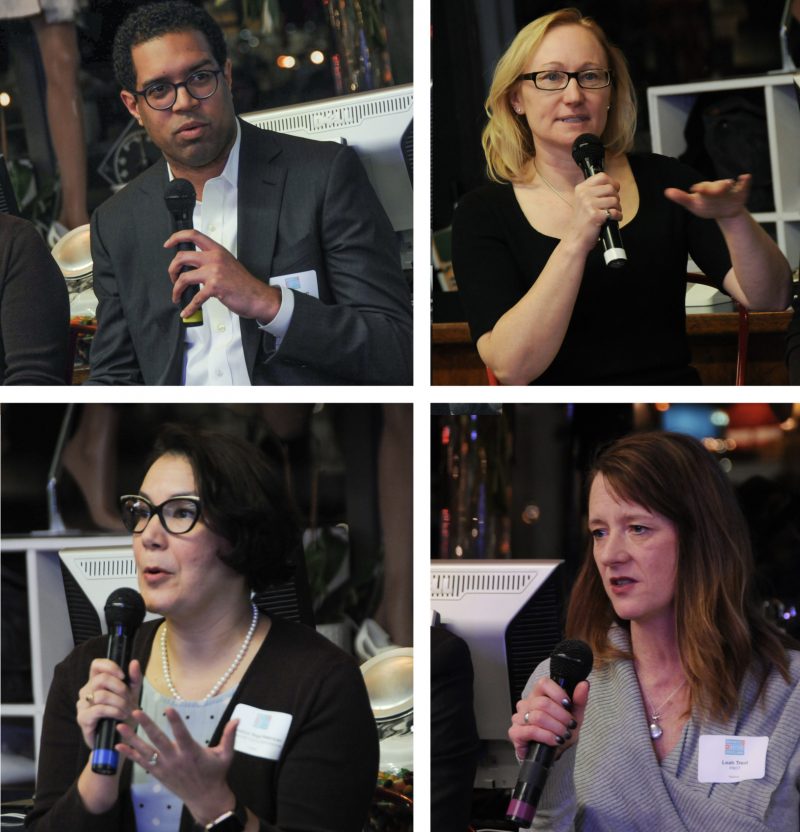
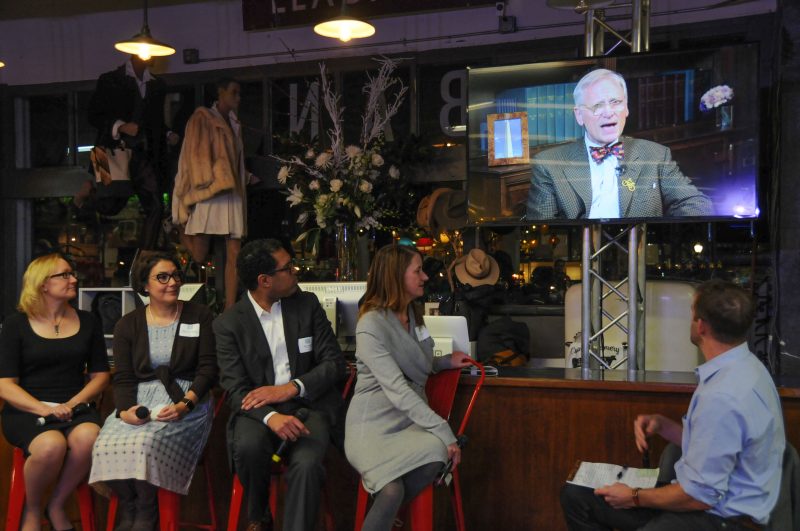
It seems like no discussion of Portland’s transportation future can happen without a look back at the projects and people who were present during our glory days. Last night it was U.S. Congressman Earl Blumenauer who set the table with a pre-recorded video message (he was busy at a State of the Union-related event). From a big screen above the panelists and crowd, Blumenauer said the Portland region needs to figure out its priorities and move forward on them. “This is an outgrowth of deep expressions of concern I’ve heard from our community over the last few years,” he said, “That our region is falling behind on transportation and infrastructure.”
“This is an outgrowth of deep expressions of concern I’ve heard from our community over the last few years that our region is falling behind on transportation and infrastructure.”
— Earl Blumenauer, congressman
We’ve been pounding this stagnation problem for many years now and believe me when I say this: It is no small thing for one of the most prominent figures in Portland’s lauded transportation legacy to publicly acknowledge that Portland has fallen behind. (Leaders rely on the success narrative to cement their legacy and positions, so admitting things have gotten bad takes courage and integrity.)
“Our past successes,” Blumenauer continued (after mentioning light rail, defeating the Mt. Hood Freeway, and the Tilikum Crossing), “are not the end of our story.”
The problem as Blumenauer sees it — and what became a recurring theme of the evening — is that leaders in our region can’t agree on a vision to move forward with. “Our region is struggling to fully agree on what we should do next and exactly what we need… We appear frozen in place.”
The moderator Adam Davis then asked the panelists several questions. There wasn’t any huge news made here and since the event wasn’t intended to be wonky, no one got into the weeds on anything. But there were some notable statements and exchanges.
When asked by the moderator to name existing obstacles that prevent us from moving forward, PBOT Director Treat made a passionate plea for more citizen advocacy:
“At the City of Portland, we have so many amazing projects lined up. So many things that we can deliver. We have tons of stuff we want to do. What we need is support from the business community, from Portlanders everywhere, to help our council make some really hard decisions. Every time that we do a big transportation project, the sense at city council is that there are binary choices being made; that there are winners and losers being presented. And rather than having a conversation about who’s winning and losing, we need people to come together and voice their support for outcomes and policy decisions that the council needs to stick with. Every Wednesday morning at 9:00 the council agenda is open for anyone to come talk about anything. And they listen. If you showed up in front of council your voice will be 100 times more important than mine over the course of the year. So show up!”
Advertisement
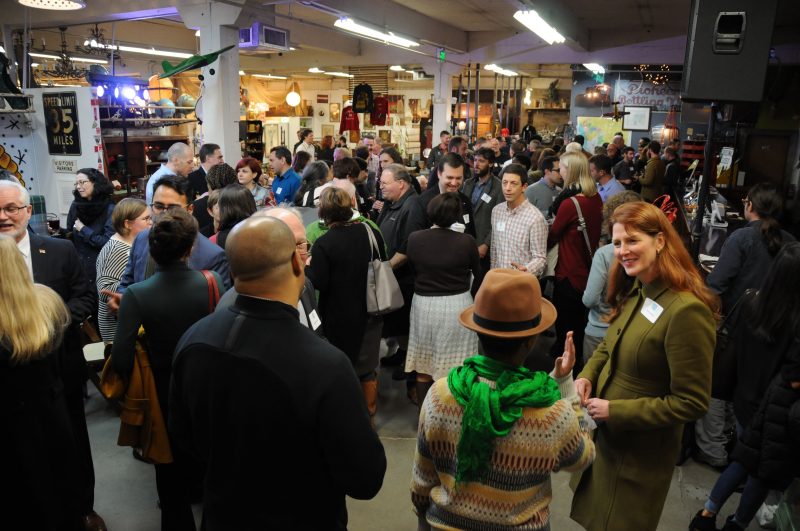
Jessica Vega Pederson said the problem is that a clear vision has not been articulated. Lynn Peterson said we focus too much on individual projects and we need to, “Go toward a corridor mentality.” Nolan Lienhart said, “We’ve done a lot of the big visionary things people were thinking about us needing to do in the 70s and early 80s — so now it’s time to recharge that.”
“Our vision needs to be a description of a system rather than a disparate strategy. Yes it’s not the same solution everywhere, but it’s also not six different solutions that don’t relate to each other.”
— Nolan Lienhart, ZGF
When the discussion turned to the geographic equity — and inequity — of transportation investments, Lienhart said our planning approach should be more unified. “Our vision needs to be a description of a system rather than a disparate strategy. Yes it’s not the same solution everywhere, but it’s also not six different solutions that don’t relate to each other.”
Then there was an interesting exchange between Peterson and Treat. Peterson argued for having a, “Base level of service we are providing for everyone in the region.” To which Treat replied, “I agree… But people in east Portland have been under-invested and under-serviced, and they still have the worst transportation network in the city. So while we do want to have an overall system that works for everyone, I think it’s disingenuous to not point out that we have much greater need and obligation to invest in east Portland.”
The highlight of the night was an audience question.
The panelists were seated in front of north-facing windows that looked onto rush-hour on the SE Grand-Martin Luther King Jr. Blvd couplet. A man in the back of the room (I regret not getting his name) said, “The backdrop behind you is an unending stream of cars coming off the Morrison Bridge. It’s deliciously ironic. This [pointing to the room] is the choir, that [pointing outside] is the congregation. What do you preach to them when they think that whatever you say is going to cost them more and leave them with less?”
Treat, who was very sharp all night, jumped on it. Here’s her answer:
“We are experiencing tremendous population growth, and they’re going to continue to come. Our system is reaching capacity and the way we have to manage it is not going to be through building new roads, so we have to start working the system to help prioritize throughput for cars, to help prioritize throughput for freight, and add travel options for other people. And I don’t know if we’ll be able to say, ‘It won’t cost you more.’ We’re looking at congestion/value pricing for a reason. The studies we have from the Rose Quarter show that 26 percent of the trips that are made at the PM peak through the Rose Quarter are discretionary. If we can get 26 percent of discretionary trips off the Rose Quarter in the PM peak, it would be the same effect as building the auxiliary lanes as proposed [In the I-5 Rose Quarter project]. So we can’t please everybody and we’re all competing for very valuable space.”
Treat’s comment is important. Note that her argument includes telling people who mostly drive that their trip times might actually improve if we redesigned roads and started to charge people to use them. And the best line of the night was how she directly questioned the need for the new lanes as proposed by the Oregon Department of Transportation in the I-5 Rose Quarter project. PBOT has been a staunch ally and partner of ODOT’s on that controversial freeway widening project. Are Treat’s comments a sign that the City of Portland might support pricing and transportation demand management before the project breaks ground?. CORRECTION, 2/1: Portland City Council passed an amendment to the Comp Plan in October stating that ODOT and PBOT should work together to use pricing and TDM, “as soon as feasible and prior to the opening of this project.”
Overall, the night felt like a sucess for Business for Better Portland. From a policy standpoint, there was a lot of talk about a vision but there was still no clear description of what it should be. Another thing I’ll takeaway is that it is now completely mainstream to acknowledge — even at the highest levels of leadership — that Portland has fallen behind and is in dire need of a bold wake-up call that can summon the courage we had 40 years ago.
From here, Business for a Better Portland says they’ll convene a working-group to come up with a transportation-related “call to action” they’ll broadcast in March. Stay tuned.
— Jonathan Maus: (503) 706-8804, @jonathan_maus on Twitter and jonathan@bikeportland.org
Never miss a story. Sign-up for the daily BP Headlines email.
BikePortland needs your support.



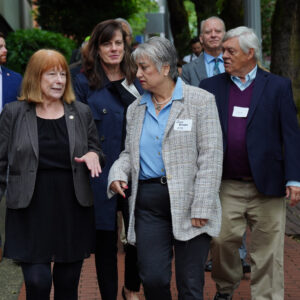
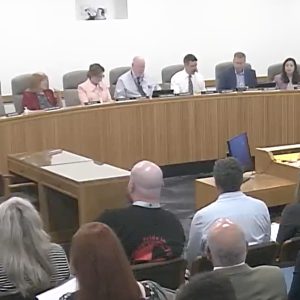

Thanks for reading.
BikePortland has served this community with independent community journalism since 2005. We rely on subscriptions from readers like you to survive. Your financial support is vital in keeping this valuable resource alive and well.
Please subscribe today to strengthen and expand our work.
“At the City of Portland, we have so many amazing projects lined up. So many things that we can deliver. We have tons of stuff we want to do. What we need is support from the business community, from Portlanders everywhere, to help our council make some really hard decisions.”
This does not sound like strong leadership. This reminds me of Charlie Hales practically blaming our decline on cyclists and pedestrians themselves for not speaking up enough. Leaders need to lead.
Just my snarky two cents.
Not necessarily; often a good leader will follow.
I hear you Matt. Keep in mind though that there are limits to how much leadership people can do in various positions. Mayor, commissioner, or agency director — they all have different political constraints. Treat is a city staffer who can push hard for stuff but in the end she answers to Commissioner Saltzman. She has to weave a line between making him look good and making herself and PBOT look good.
I see your point. I guess maybe I just expect our leaders to do more, or better, or speak out more, just SOMETHING! I don’t get the impression that anything is really happening, or certainly not fast enough, especially if we want to achieve Vision Zero. I don’t see any bold ideas.
I think this comment by Treat reflects the lack of vision by the commissioners and the mayor. If there was a clear vision then they would be willing to do the hard thing to get there. And I do not think that having people step up can fully overcome that void because each project remains evaluated and discussed in isolation, without a clear connection to a larger picture.
And we really need a vision because many transportation projects are complementary, meaning that their larger benefits only can be realized when combined with other projects. Without a vision projects that could be, in combination with others, yield high benefits, are never been done. And that’s why Portland is stuck.
As an example, consider bus rapid transit. If PBOT transformed 10, 20 lines by giving these bus lines dedicated space and increasing frequency especially during rush hours, and it did that within 2 years, then a large number of commuters would switch, and overall, the gains (lower commuting time, less congestion) would be clearly visible. But if it takes 10 years of planning for one bus lines and even then the results aren’t that great because the city does not really prioritize bus transit over car transit, then bus ridership does not increase, congestion does not decrease, and everyone says that mass transit does not work here.
I am going to agree with Matt and Stephen here. What is this ‘working to make me or my boss look good’ business? Leaders aren’t worried about looking good; they’re busy implementing what the charter/code/legislation/Bike Master Plan already expects of them.
Leaders lead from the front.
It’s relatively easy for a small community, or a neighborhood within a larger one, to reach consensus on needed bike or pedestrian projects. It’s much harder to do so for a whole district – working with others, I tried to in East Portland for 7 years with limited success. Reaching consensus for a whole US city of over 600,000 is pretty much impossible. Yes, we all want more and better infrastructure, but where exactly? Which project takes precedence? The BAC has tried to rank projects, but given the lack of proportional representation from Cully or East Portland, city council and even PBOT leadership often discounted the BAC rankings except for inner-city projects. Until Portland has a large legislative body in place of its 5-person city council, one elected by districts with no more than 20,000 constituents per representative, Portland’s residents will never have any sort of reliable consensus on pretty much anything.
Hear, hear. Portland needs a representative council from geographic districts with a strong mayor. We think we’re special but our special city gov’t structure is now leading to paralysis and dysfunction.
Yes, BUT Seattle has recently approved over $56 billion (with a “B”) in funding for a massive expansion of light rail & bus rapid transit. Los Angeles: $100 Billion. Denver, Albuquerque, other cities too. Don’t tell me that it’s not possible for a region to come together around huge, ambitious, NON-AUTO, mass transit expansion agenda. I weep for Portland. We are locked in a straightjacket of conservative, anti-tax austerity policies and 1980s-style, head-in-the-sand attitudes by the corporate elites, which sadly are not really being challenged by city government.
And by the way, I totally agree that we need to ditch the at-large city comission structure (with commissioners as bureau chiefs) and move to a larger (at least 7 or 9 members), district-based city council. It’s essential, and there’s a majority of public opinion now in favor of doing this.
Agreed.
I imagine a lot of people who care very much about active transportation, people centered public space and climate goals also care very much about their personal work to improve the world, AKA their jobs. They may not have time to go to city hall and hold council members hands while they make hard decisions. Basing public policy disproportionately off of pressure from businesses that buy influence, people who have the spare time to be politically active or single-issue activists is ridiculous.
Yes!
And yet it is so familiar. Bikey folk are exhorted all the time to give cover for PBOT to do X. Why do we have the Bike Master Plan?
Are the autoists exhorted to come down on Wednesday mornings and ask for crumbs for the Rose Quarter? Or digital billboards on the area freeways? Of course not.
The Central City Plan has an action item that directs PBOT staff to work with ODOT on value pricing prior to the construction of the Rose Quarter widening. What it stops well short of is placing any commitment on ODOT to actually implement a value pricing plan. It’s clear the City would like congestion pricing in place, it just won’t go to the mat for it…
thanks for the clarification Chris. If the City “went to the mat” for more stuff they believe in more often — instead of waiting for the haters to stop hating or the political winds to start shifting — we’d live in a much better place.
“The up-and-coming association is looking to be a counterbalance the impact of the Portland Business Alliance, a more conservative group that has had a vast — and some would say deleterious — influence on city transportation policy over the years.”
This is exactly why my business joined Business for a Better Portland. Progressive minded businesses desperately need this alternative to the PBA which, let’s be honest, is really just a wing of the Republican party.
So your saying that “Business for a Better Portland” is just a wing of the Democratic party?
Non sequitur.
Are there only two flavors of ice cream in your shop, Tim?
This says it all for me: “prioritize throughput for cars, to help prioritize throughput for freight, and add travel options for other people.”
1. Cars first.
2. “_Other_ people” are the ones who would like “added” travel options. Other.
Everyone already has the travel options, but cars are in the way. It costs far more to “add travel options” after filling every road with high-speed cars.
Eric,
That didn’t sound great to me either.. But keep in mind that she was speaking live and spontaneously and I’ve learned over the years that things don’t always come out exactly like you want them too. It’s really important to know and respond to what leaders say… But more important to let their actions ultimately be the judge.
If we judge them by their actions, I think PBOT comes up short.
I think their actions are clearly very cars-first. Look at any new design or even the repaving work. PBOT is laboring under the myth that car traffic is a constant and that we *must* meet whatever demands cars bring. It’s in “the signal fails” (i.e. not everyone in a car made it through a light), in the number of lanes required being a formula based on cars/hr, in the minimum lane width (many are using 9.5ft but PBOT won’t go under 11), the forgotten bike lane on 14th, branches and blackberries in the lanes on Terwilliger, etc. Why isn’t all of SW Corbett on the 20mph plan? Let’s look at SW Vermont, Multnomah, Taylors Ferry. The drivers on these roads aren’t even voters, but they have cars so we do whatever they want. Why do we need to appease suburban commuters before taking any action to follow our own plans and policies?
“PBOT is laboring under the myth that car traffic is a constant …”
AKA Car-head.
That’s one way to look at it. Another is that she carefully chose “throughput” as a means of saying make better use of what we have so that we can make space available for others. i.e. remove parking (zero throughput), road diets (increased throughput per lane)…
At the end of the day she has to sell this to her boss who has to sell it to the public (well, in general/theory, not exactly true when her boss isn’t up for re-election). A message of “to hell with cars,” while satisfying, is probably self defeating.
“she has to sell this to her boss who has to sell it to the public ”
I know that is how everyone seems to think this works, but I reject this out of hand.
What is with the selling metaphor? These decisions should not be filtered through what this phrase implies: every day we have to persuade our boss to do X rather than Y. To conceptualize this this way is folly. Why do we have an entire bureaucracy, staffed with smart people, and a fraught history of getting it wrong, an existing infrastructure, a paper trail of documents going back generations that gives us (correct me if I’m wrong here) cover to do the right thing?
Surely this kind of ad hoc view of policy, that privileges the whims (or our interpretations of what we think they are) of whoever is the cheese is no way to accomplish anything bold or meaningful. No wonder we’re so stuck!
“Our system is reaching capacity and the way we have to manage it is not going to be through building new roads”
There have been many brief resurgences of active transportation/mass transit that were followed by declines and a return to car-centrism. The idea that Portland is somehow immune to failure is hogwash.
For example, bridge count numbers are consistently down 3-7% over 2016 (at least when the equipment was working):
http://portland-hawthorne-bridge.visio-tools.com/
If I had to guess, I think we will see a 5 handle for bike mode share this fall.
Nicely dressed ladies at vintage decor Urbanite!
We need more of that!
Shortly before Fred Hansen left TriMet he remarked that he had asked Vera Katz to chair the design committee for the Tillikum because he wanted, “A zero BS project.”
We miss you, Vera!
So what can Portland leaders learn from Chicago? New York? Barcelona? Etc. Much bigger cities. Yet they seem to be getting the infrastructure changed.
Leah Treat’s call for people to “SHOW UP!” for Wed 9am City Council meetings is just unrealistic. Most people have jobs. Her comment reveals a huge blind spot. City gov’t is not going to hear from people until it comes up with more innovative ways to involve them, such as this effort in Estonia:
https://www.newyorker.com/magazine/2017/12/18/estonia-the-digital-republic
“…The studies we have from the Rose Quarter show that 26 percent of the trips that are made at the PM peak through the Rose Quarter are discretionary. If we can get 26 percent of discretionary trips off the Rose Quarter in the PM peak, it would be the same effect as building the auxiliary lanes as proposed [In the I-5 Rose Quarter project]. So we can’t please everybody and we’re all competing for very valuable space.” …” Leah Treat
In the context of use of I-5 to and from the RQ, what does Treat mean by
“…discretionary trips…”? I think it’s important to have a clear understanding of what she believes the 26 percent she refers to, consists of in terms people driving or riding in motor vehicles, the needs and purpose of the trips it’s believed they are making during the time referred to.
Also, if she believes there is a viable alternative to the RQ project by which the people represented by that trip number can meet their trip needs…what does she believe that might that be?
Treat said also, before the excerpt above:
“We are experiencing tremendous population growth, and they’re going to continue to come. Our system is reaching capacity and the way we have to manage it is not going to be through building new roads, so we have to start working the system to help prioritize throughput for cars, to help prioritize throughput for freight, and add travel options for other people. …”
Prioritizing throughput for motor vehicles, is exactly what the RQ project and its auxiliary lanes for the short, mile or two section abreast of the RQ, consists of. If it’s by way of congestion pricing, how does Portland Transportation Director Leah Treat propose to use that concept to specifically get the 26 percent of discretionary trips she refers to, “… off the Rose Quarter in the PM peak…”, how does she propose to do that?
Some viable means of being able to avoid having to spend 450 million to build this throughput project for the RQ on the I-5 through Portland, and still meet the travel needs of the city’s, and the state’s, because I-5 is an interstate highway…would be welcome…if a viable means does exist, which at present, is not at all certain.
“what does Treat mean by ‘…discretionary trips…’?”
You would stumble over that, wouldn’t you?
Discretionary means not that important, urgent; something you could also skip. Some of us have been saying (or suggesting) things along these lines for a long time. It is the underlying reason why congestion pricing works so well where it has been implemented.
At $100, almost every trip is discretionary. At 1¢, almost none are. It’s a very fluid definition.
In his State of the Union speech, Trump mentioned infrastructure and transportation only very briefly. He spoke of “gleaming new roads,” but not one word about ped/bike issues and projects around the country, many of which are shovel ready and have public support. He also mentioned pre-construction timelines that can take up to 10 years because of environmental impact documentation requirements. (He thinks that environmental impact laws are unnecessary, designed to kill off projects.) He wants to reduce pre-construction timetables down to a year or less. In short, he wants to ram highway projects thru, with little or no public input. He did talk about public/private funding ideas, with no real details, but can we turn that to our advantage? His obsession on new highway projects may put things like the SW MAX project into serious doubt. The I-5 Rose Quarter project is an example. Will he try to ram it thru with the idea of starting construction in a very short time? And will he order the school razed to make room for widening the freeway? Something to pay attention to very, very closely.